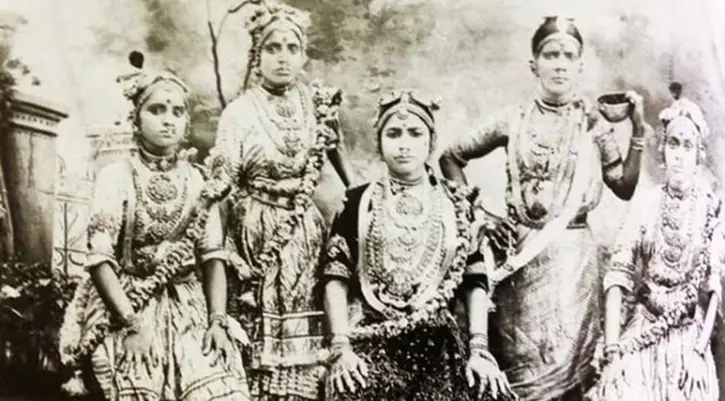

The Karnataka government recently complied with the National Commission for Protection of Child Rights' suggestion to stop asking children of Devadasis about their fathers.
Official statistics indicate that 45,000 children in Karnataka are born to Devdasi women. There have been reports of intimidation, coercion, and application denials by the authorities due to the father's name. The Commission has determined that the mother's name is the children's legal name. It has been determined to only accept the mother's name when applying for caste, income certificates, and other documents as well as for school admissions.

Theleaflet/Representational image
In addition, the Women and Child Development Ministry has taken steps to integrate the 12,000 Devdasis whose names were excluded from the survey list.
Since ten years ago, the Raajya Devadasi Mahileyara Vimochana Sangha and the Raajya Devadasi Mahileyara Makkala Horata Samihi have been actively participating in a joint campaign.
The Devadasi system that is hindu religious ritual offers prepubescent females to gods for marriage. When Devadasis reach adolescence, they are ceremonially compelled to perform sexual duty as servants decreed by the deities. Their virginity is sold, and if they are compensated at all, it is a pittance.

vickynairofficial/Representational image
Devadasi translates to "Servant of God." These ladies are devoted to God and are regarded as God's wives, hence they are not allowed to marry any "mortal."
The history of Devadasi culture may be traced back to the 7th century, mainly in southern India during the Chola, Chera, and Pandya dynasties. Plainly put, Devadasis are nothing more than child sex workers or sex slaves.
The modern Indian state of Andhra Pradesh, Gujarat, Karnataka, Maharashtra, Tamil Nadu, and Telangana are mostly where one can still find Devadasis. In Maharashtra, they are known as Mathangis, while in Andhra Pradesh and Telangana, they go by the names Jozinis or Mathamma, Devadasis in Karnataka, and Mathammas in Tamilnadu.
This custom is believed to be dating back to the seventh century, when young girls were married to the deity and afterwards served as the temple keepers, carrying out all ceremonies, including dancing and music, in the deity's honour.
Before taking care of the temple and participating in rites, the females studied and practised arts like Bharathanatyam, Odissi, or other classical dance forms. They formerly held a high place in society since dancing and song were essential components of temple worship. They were later exploited and unfairly treated as a result of British involvement in the country, that led to a decline in their social rank.
The barbarism of the tradition is reflected in the very rituals it involves. The 'Deflowering Ceremony,' also known as Uditambuvadu in some regions, is reportedly a component of the initiation ceremony.
As part of his 'religious duty,' the priest is claimed to have an inter-course with each lady enrolled in his temple. In such a way that a Marathi proverb goes, "Devadasi devachi bayako, sarya gavachi," which translates as "servant of God, but the bride of the whole town."
There are many misconceptions regarding this harsh practise. This practise is based on the Andhra Pradesh tradition that says it is possible to ward off evil from the family or the village by devoting a girl to the temple deity.
She is taken as a concubine by the village's feudal gentry as soon as she enters adolescence.
In 1988, the system was made illegal. The institution remained strong—though less open—in the 21st century, especially in portions of the south, even though the number of devadasis eventually started to fall.
The Madras Presidency passed the legislation in independent India, which laid the stage for subsequent laws such as the Maharashtra System Abolition Act of 2005, the Karnataka Devadasi (Prevention of Dedication Act), and the Andhra Pradesh Devadasi (Prevention of Dedication Act) of 1947.

Wikimedia/Representational image
However, there are several difficulties that the law-enforcing authorities must overcome if they are to completely eradicate this tradition from society.
Even though the Supreme Court ordered this system to be abolished, a few states in India still follow the Devadasi practise. According to a religious doctrine, if a family dedicates their daughter, the deity will be pleased and will bless the family. This is among the main justifications for why people continue to follow this custom.
Since Devadasis used to be granted a higher social rank, many economically struggling families think that sacrificing their daughters will raise their social standing.